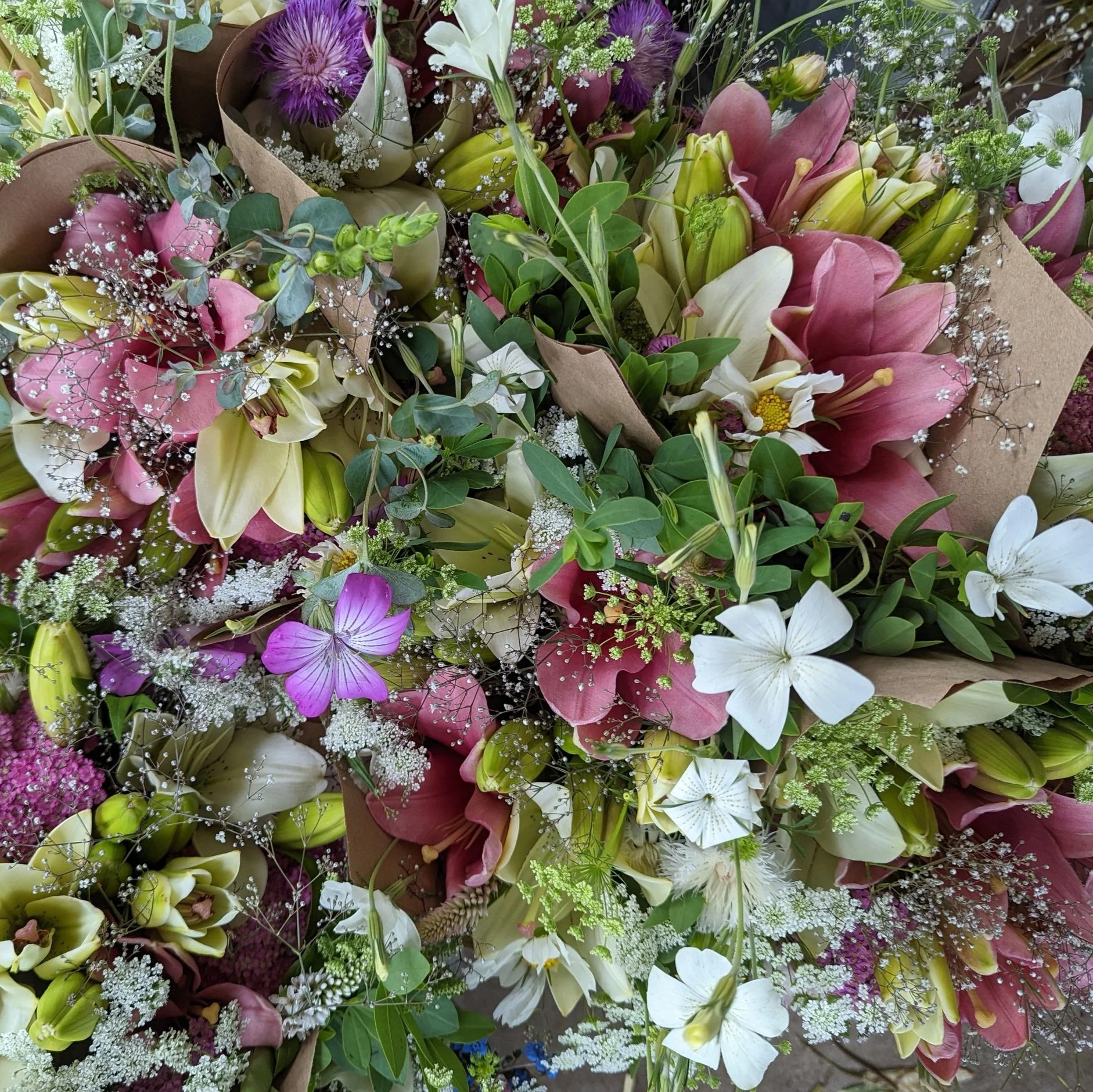Top 3 Simple Tips for Beautiful Bouquets
Top 3 Simple Tips for Beautiful Bouquets
“What are your best tips for making a beautiful bouquet? Mine never look as good as I imagine them in my head!”
I hear this question all the time!
You’re in luck - I have some simple, actionable tips that will help.
Over the past 7 years, I’ve crafted thousands of bouquets using seasonal blooms from our farm. When I first started, I’ll admit my bouquets were less-than-stellar (that's a nice way of saying it!) because I was trying to do too many things at once.
As is true with so many things in life… Simplify, simplify, simplify!
Choose a Color Scheme
Remember sitting in Art class learning about the Color Wheel and rolling your eyes thinking “This is so boring. Why do I need to know this? When will I ever use this?”
You’re gonna use it now, friend. ;)
The Color Wheel is a tool that helps you determine which colors look good together, depending on the “feel” or “look” you’re going for.
Sticking to a recognized Color Scheme, instead of mixing colors together willy nilly, will create a cohesive, pleasing design.
Of course, rules are meant to be broken, but if you’re looking for some guidelines to keep you on track, stick with a Color Scheme.
Color Theory can be complex, so here are a few Color Schemes that are simple and easy to use:
Complementary Colors: Colors directly across from each other on the color wheel. (Ex. Violet and Yellow)
Color Triads: Colors that form a perfect triangle on the color wheel. (Ex. Violet, Green and Orange)
Monochromatic: Multiple shades and tones of one color. (Ex. Varying shades and tones of pink)
Warm Colors: Reds, Oranges, Yellows
Cool Colors: Greens, Blues, Violets
As you can see in the sample photos below, I love to work with “Warm” and “Cool” Color Schemes.
When my daughter and I make our bouquets, we pull out all the “ingredients” (flowers/foliage) we have to work with, then divide them into “warm” or “cool”.
Then we lay out the “cool” color ingredients on the table assembly line style and make all the cool bouquets. After we’re done, we switch to the “warm” color ingredients and make all the warm bouquets.
2. FOCAL, FILLER, FOLIAGE
To simplify the bouquet making process, on our farm we assign every bouquet ingredient to one of these 3 categories:
Focal: The main flowers that capture the most attention.
Filler: The other flowers that compliment the Focal flowers (the vast majority of the bouquet is made of these ingredients).
Foliage: The greenery that creates the foundation for the Focal and Filler flowers
To learn even more about Focal, Filler and Foliage, read this Blog Post.
We like to divide a bouquet into roughly ⅓’s so that the overall mass of the bouquet is:
⅓ Focal Flowers
⅓ Filler Flowers
⅓ Foliage
We find this simple loose formula, along with a well defined Color Scheme leads to a well balanced, pleasing bouquet.
Focal: Dahlias
Filler: China Aster, Veronica, Celosia, Snapdragon, Strawflower, Lisianthus, Gypsophila, Statice
Foliage: Eucalyptus, Plectranthus
3. LIMIT THE “INGREDIENTS” in your “recipe”
It’s very easy to succumb to the temptation to add “a little bit of this, a little bit of that” to a bouquet… until you’re left with a cluttered, mish-mash bouquet that has no distinctive “flavor”.
The secret here is CONSTRAINT.
Instead of choosing 30 different flowers/foliage, CONSTRAIN YOURSELF and choose 5-10 flowers/foliage, and use them in multiples of 3-7 stems.
Why? The human eye loves pattern and repetition. Repeated shapes, colors, textures… all of these are pleasing to the eye and our brain can make sense of them. If a bouquet has no pattern or repetition, it looks chaotic and our brain doesn’t know how to process it.
Here’s a sample bouquet “Recipe”:
Focal - 1 Lily stem
Filler - 3 Snapdragon stems, 5 Yarrow, 3 Ammi (False Queen Anne’s Lace) stems, 5 Agrostemma stems
Foliage -3 Baptisa stems
There are countless more bouquet tips, but again I want to emphasize:
Simplify, simplify, SIMPLIFY.
Once you master these 3 simple tips, you’ll be crafting your own beautiful bouquets in no time!





